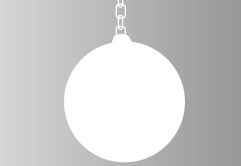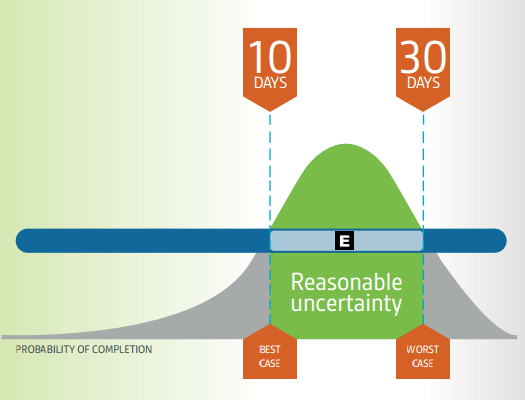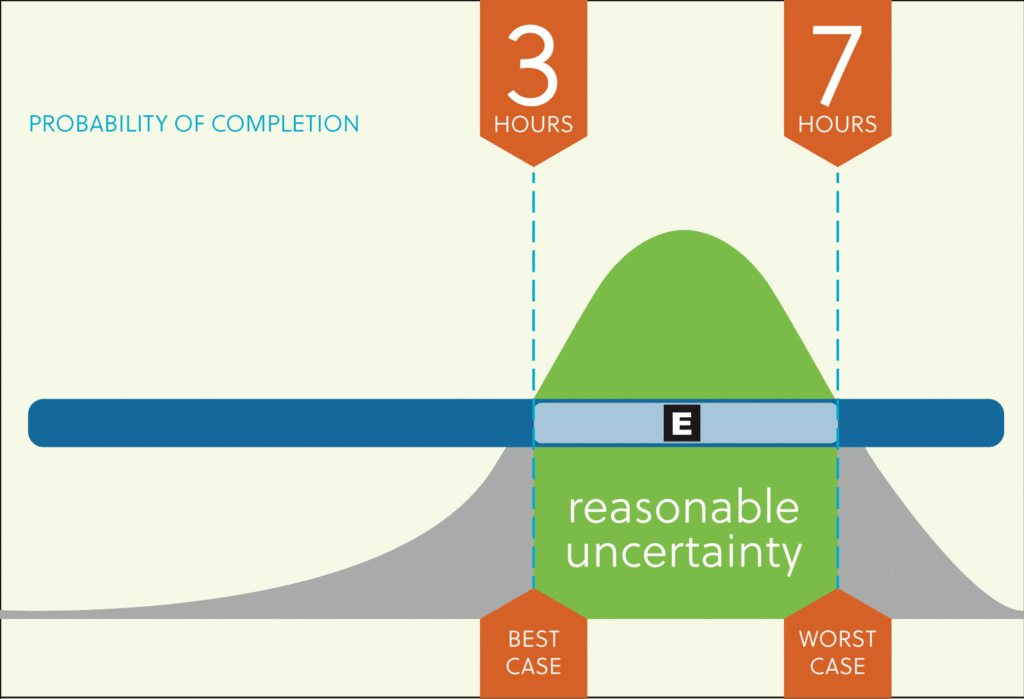When it comes to managing technical projects, you already know this: The only thing you can be sure of is uncertainty. Your project will undoubtedly take a few twists and turns on the way to delivery. And who knows what other sudden needs or emergencies will pop up to divert your attention from the project at hand. But that’s project life, right?
And there’s another thing: statistics are not in your favor. IT projects run about 45% over budget and 7% over time, and consequently deliver 56% less value than predicted. This is why making ranged estimates based on best case/worst case scenarios is the smartest way to go because they’re realistic and reliable. While LiquidPlanner’s scheduling engine is based on making these kinds of ranged estimates, knowing how and why they’re so effective, and instilling some wise practices will improve your job as a project contributor and a team leader.
Why ranged estimates work
Ranged estimates mirror the real world. For example, if someone asks you how long it takes you to drive to work, you’ll probably say “between 20 and 35 minutes,” not “23 minutes.” Traffic, like projects, has a lot of variables. When you make ranged estimates that are based on best case/worst case scenarios, you’re taking into account all the uncertainty and change inherent in every project.
Compare this to making a single-point estimate based on educated guesses, going off past experience or responding to what the date customer is asking for. How do you, your team and stakeholders experience the project process with all its ups and downs? The guess is there’s a lot of stress and mistrust in hard deadlines that get repeatedly missed and re-set with no great explanation why, or missing the advanced warning that the project is going over until it’s, well, too late.
Making your estimates
When you set out to create your ranged estimates, consider how long each task will take if all goes well (best case), and if it blows up (worst case). Then, take all the parts of the project you estimated and roll it up to encompass the project as a whole. You’ll arrive at a range of estimates that reflect varying levels of certainty between these two cases (the mid-point being the expected estimate). You can then plan out and budget the project on whichever of these values you deem most appropriate. Project uncertainty is greatest at the start of any project. As the project progresses, team members can update the remaining work estimates to reflect progress and diminishing risk as more work gets done and the threat of the unknown decreases. The result: teams, stakeholders and clients who trust the plan. And for you, confidence in your estimate because it’s based in reality.
Here’s a story of a ranged estimate in practice
Let’s say you’re a developer who was asked for an estimate to implement a new feature. While you’ve got a good idea of the high level requirements, the detailed design spec isn’t available yet. So you start a first draft of a ranged estimate using best case and worst case scenarios:
Best case

If the scope turns out to be what you anticipated and you don’t hit any major snags, you decide 10 days is a reasonable best-case estimate for completion. A suggested reasonable estimate is one that you’re 80%+ confident in.
Worst case

What if the detailed design ends up adding some unplanned complexity? Or you have to fix a few bugs in the existing code along the way? (It’s happened before.) Weighing all these possibilities, you decide 30 days would be a reasonable worst case estimate for completion.
Your current rough estimate is between 10 – 30 days. This is quite a range, but it reveals the level of uncertainty in the project or task, and at this early stage it’s wise to base your project plan on the worse case estimates, and build the risk directly into the overall schedule.

You’re probably not new to estimating your work in some shape or form. But how confident do you feel about making that end-date? Mastering the art of estimation is an ongoing process. As you refine your skills, estimations become more accurate and team members can anticipate risks and plan for uncertainty.
If you use project management software like LiquidPlanner—where the estimates for each task roll up into the overall project schedule—you can see an updated project plan whenever changes are made. Yes, scopes and dates my undulate, but you and everyone else involved will know what’s coming down the pike every step of the way. When asked where a project stands, you can give a realistic and dependable answer.
And nobody can overvalue the currency of trust.







